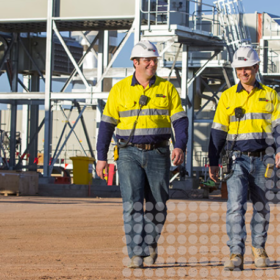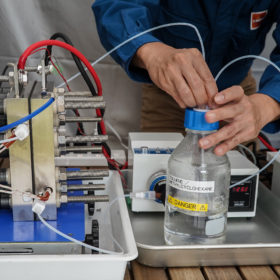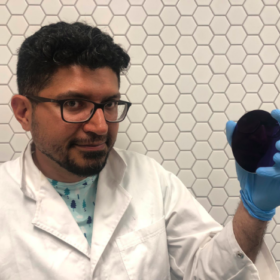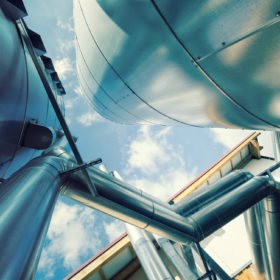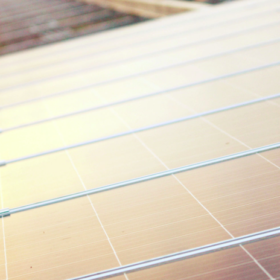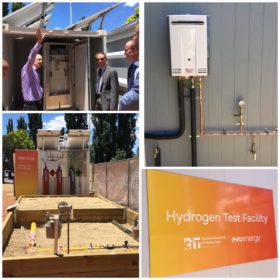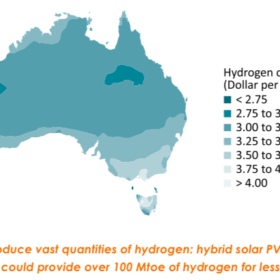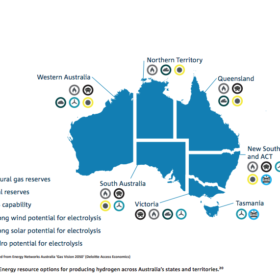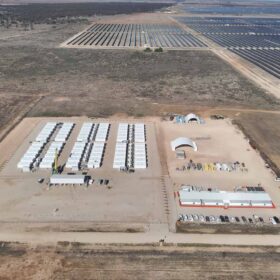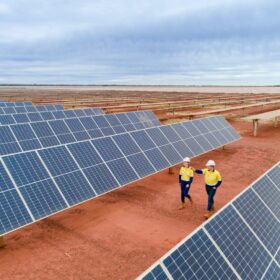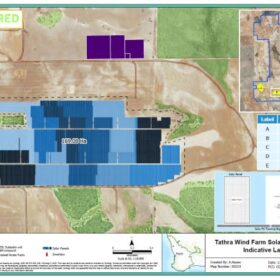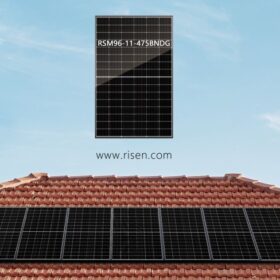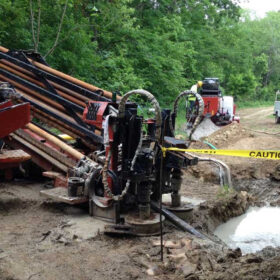Public consultation opens for 11 GW renewable energy hub
The Western Australian Environmental Protection Authority is seeking public submissions on the massive Asian Renewable Energy Hub proposed for the Pilbara region.
Gas boss backs PV to hydrogen
Outgoing APA Group CEO Mick McCormack has pointed to a bright future for power-to-gas in Australia in an address to a Macquarie Group conference this week. The long-serving gas infrastructure head said that excess PV generation, particularly when generation is at remote sections of the grid, could be utilised to produce green hydrogen.
Queensland sends first green hydrogen shipment to Japan
Green hydrogen has been exported from Australia to Japan, under a trial executed by researchers from JXTG, Japan’s largest petroleum conglomerate, using Queensland University of Technology’s cutting-edge solar cell facility at the Redlands Research Facility on the Gold Coast. On top of that, the Queensland government has announced $250,000 in funding towards the establishment a renewable hydrogen production pilot plant.
A solar-powered chemical industry? It’s not what you think
Chemical manufacturing accounts for around 10% of global energy consumption and 7% of industrial greenhouse emissions. Researchers at RMIT University have developed a material that can capture 99% of light and directly apply it to power chemical reactions thereby slashing emissions and improving the efficiencies of current processes.
COAG energy ministers backs development of national hydrogen strategy
The December meeting of the COAG Energy Council has grabbed headlines as NSW attempted to push for a zero-emissions policy only to be blocked by Federal Energy Minister Angus Taylor. But, in a rare substantive outcome of the meeting, the energy ministers agreed to develop a national hydrogen strategy.
Victoria announces hydrogen program, community renewables grants
The Andrews Labor government is investing $2 million to boost the development of clean hydrogen energy technologies, and $1.1 million to support renewable energy projects in local communities across Victoria.
Australia’s first hydrogen test station opens in Canberra
ACT gas network operator Evoenergy and the Canberra Institute of Technology have partnered to build a first of its kind hydrogen test facility at CIT Fyshwick. The station will test up to 100% hydrogen in deployments in which natural gas is currently used.
IEA World Energy Outlook highlights viability of Australian ‘green hydrogen’
Hydrogen produced by electrolysers powered by solar and wind in Australia could replace 3% of the world’s gas consumption. The IEA made the observation today in its ‘flagship’ annual publication, noting that by 2040 costs of renewable hydrogen in northern Australia would likely be competitive with hydrogen produced from natural gas.
Green hydrogen to power Sydney homes and businesses
The project will use solar and wind to produce hydrogen via electrolysis, which will be then be stored across the Jemena Gas Network in New South Wales. The $15 million trial will be half-funded by the Australian Renewable Energy Agency.
ARENA awards $22.1 million to 16 hydrogen export research projects
The Australian Renewable Energy Agency (ARENA) has offered funding to nine Australian universities and research organizations to propel innovation in green hydrogen export.

